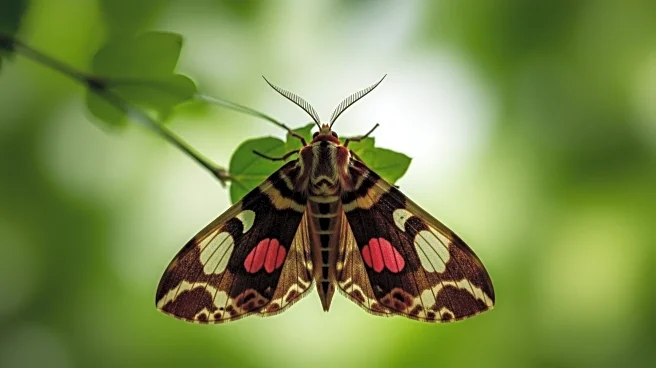What is the story about?
What's Happening?
Entomologist Dr. Peter Huemer from the Tyrolean State Museum Ferdinandeum in Innsbruck, Austria, has identified a new moth species named Carcina ingridmariae. This discovery was made possible through DNA barcoding, which revealed significant genetic differences from its lookalike, the oak carcina (Carcina quercana). Despite its vibrant pink and yellow hues, Carcina ingridmariae had been overlooked for over a century due to its resemblance to the widespread oak carcina. The new species has a wingspan of about 2 cm and is found across the eastern Mediterranean, including regions such as Croatia, Greece, Cyprus, and Turkey. Its larvae are believed to feed on various oak species, similar to its counterpart. The discovery was dedicated to Dr. Huemer's wife, Ingrid Maria, in recognition of her support throughout his career.
Why It's Important?
The identification of Carcina ingridmariae highlights the importance of DNA barcoding in distinguishing species that are visually similar. This advancement in entomology not only contributes to the understanding of biodiversity but also aids in the conservation of species that may have been previously misidentified. The discovery underscores the potential for uncovering new species in regions with rich biodiversity, such as the eastern Mediterranean. It also emphasizes the role of scientific research in expanding knowledge about ecosystems and the organisms within them, which can have implications for ecological studies and environmental policies.
What's Next?
Further studies are expected to focus on the biology and distribution of Carcina ingridmariae to better understand its ecological role and potential conservation needs. Researchers may conduct detailed investigations into its feeding habits, life cycle, and interactions with its environment. This could lead to more comprehensive conservation strategies for moth species in the Mediterranean region. Additionally, the use of DNA barcoding may continue to reveal other overlooked species, prompting a reevaluation of existing classifications and biodiversity records.
Beyond the Headlines
The discovery of Carcina ingridmariae also raises questions about the accuracy of historical species identification and the potential for other misidentified species. It highlights the ethical considerations in naming new species, as seen in Dr. Huemer's dedication to his wife. This practice reflects the personal connections and motivations that can influence scientific work, adding a human dimension to the field of taxonomy.
AI Generated Content
Do you find this article useful?
















